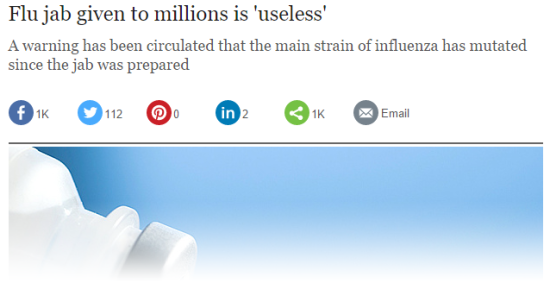Archive for the ‘ Pictures ’ Category
Kensington Nouveau
Posted on December 14th, 2015 – Comments Off on Kensington Nouveau Filed under: Dispatches, Patrick Bay, PicturesAllegations
Posted on December 13th, 2015 – 1 Comment Filed under: Dispatches, Patrick Bay, PicturesBrother, can you spare a dime?
Posted on November 23rd, 2015 – Comments Off on Brother, can you spare a dime?You may remember that CypherPoker thing … well, we’re at a crossroads with the project and would like to ask for your support. If you have a few bucks to spare we would appreciate a visit to our GoFundMe page:
https://www.gofundme.com/provable
If like us you have approximately $0 to contribute but think the project is still a neat idea, you’d be helping us by sharing a link. Try out the buggy but functional first version first if you like, then send me the final link and a name and I’ll send you a TCL shoutout. If it’s not your name, that’s okay too.
And thanks!

Bad rentals! Greenwin, Sterling Karamar, Capreit, Starlight
Posted on October 26th, 2015 – 18 CommentsOver a year and a half ago I brought up some of the issues that we were experiencing with our apartment. In case you don’t remember, the 2 elevators had slowly been deteriorating and eventually stopped working altogether. No matter how many times we approached management about the issues, no matter how many times the TSSA issued “stop operations” orders, nothing but sloppy band-aid solutions were applied. It was only until the tenants got utterly fed up and collectively took the company to court that something got done. But the elevators were just one of the problems, the rest of which persist.
The management of the Startlight Investments property at the time was Greenwin Inc. which was subsequently switched to Sterling Karamar. At least that was the placation; the fact that almost none of the contact information had changed suggested that, indeed, little had changed. In fact, comparing the customer portals of Greenwin and Sterling Karamar shows a remarkable similarity.
This might be easy to dismiss until one looks at the corporate leadership of Sterling Karamar and Property Vista, the mutual customer portal shared with Greenwin. Property Vista’s CEO is Leonard Drimmer, formerly CEO of property management firm Transglobe, a company founded by Daniel Drimmer (no relation, I’m sure), CEO of Starlight. Okay, so Sterling Karamar and Property Vista are connected but where does Greenwin come into it? Well, our building manager has been kind enough to put the pieces together on his LinkedIn profile:
How about that? Looks like Mr. Vorajee worked for Greenwin (the company “managing” 200 Wellesley during their massive fire), right before suddenly switching over to Sterling Karamar – right around the same time as Starlight made the switch from Greenwin to Sterling Karamar at our place. Mere coincidence, I’m sure.
I’m sure it’s equally coincidental that Capreit, where Asad was a “leasing specialist”, was acquired by Starlight. Yeah, sure. I’m equally dubious of Timbercreek’s proximity to Starlight but maybe I’m wrong there. Regardless, when the tenants described Starlight’s lack of action as a “shell game” during our court action, they were right. When Asad explained that he had no knowledge of our property’s problems before he took over, I was right to be skeptical. Besides, how does one become a property manager without knowing anything about the problems with the property that they’re managing?
Just to give you a taste of the services that these people expect us to put up with, we’re now into the 10th day without hot water; we’d probably still be waiting for them to just have a look if I didn’t let loose on them over the phone two Saturdays ago. Of course, Asad claimed that no one had complained and he had no idea! Sure.
Then there’s the problems with the stairwells — see how many you can spot:
Although the graffiti’s a nice touch, the real problems are the banisters, slippery-paint stairs on all but 2 floors, and a complete lack of emergency lighting. When the elevators went out this was our only way up 18 flights of stairs. With a wheelchair it sucked. During the rain and snow it sucked more. When the power went out it sucked even more.
The superintended shrugs and walks away whenever these issues are brought up, and despite the continuous torrent of complaints he receives (according to him), he seems quite satisfied to keep his mouth shut and continue in his role. Perhaps it has something to do with the newly acquired BMW he’s been proudly buffing in the parking lot; quite a prize for a lowly super!
Then when we bring up these problems to management, their lackadaisical “fixes” (when they actually bother), leave a lot to be desired:
Every level of the company claims ignorance of any of these issues. Instead of addressing them they insist that we use their portal to report them, after which they’re promptly ignored. For example, I currently have 16 open maintenance issues which have been sitting idle without any follow up for a week now (they kindly ask for up to 2 business days to set up an inspection). Some of the open issues include a busted bathtub faucet:
…water-damaged ceilings:
…no doubt as a result of the newly renovated roof which appears to be about as watertight as the newly renovated windows:
…or the walls on which, contrary to the superintendent’s advice, sticking a piece of tape doesn’t fix the drafts:
Equally ineffective was their “solution” to a lack of hot water in our kitchen sink. For this they broke through the wall into the adjoining unit and connected our hot water to theirs. When the building actually has hot water the water pressure understandably sucks, but on the bright side our cats can squeeze through the hole and make unexpected visits to our neighbour, as can odours and drafts:
Based on this I think it’s doubtful that the rotting caulking, peeling paint, or crumbling balcony would be a high priority for them:
I haven’t even touched on the grossness in the basement laundry room, complete lack of security, and other problems throughout the building, but I’m sure you can imagine them at this point.
However, it would be unfair for me to claim that management aren’t at least aware of our presence in this building. Yeah, problems don’t get fixed, but they’re quick to let us know how concerned they are:
Third increasing in three years. Heart-warming.
But wait, there’s more:
Funny, I recall choosing this place specifically because they didn’t require insurance, but the year-long lease that they refer to has long since expired anyways. Still, their honesty about how this is to help lower their insurance costs is refreshing and understandable; they don’t want us suing them for the inevitable destruction of our property as a result of their shoddy service and workmanship.
I’d be willing to be fair and say that we receive other communication from them but, aside from the occasional pamphlet asking us to log into Sterling Karamar’s portal, or flyer asking us to sucker someone else into renting in one of their buildings (for a $300 reward), the only news we currently have is in the landing to let us know that the hot water might be back on by the end of this week. Maybe. Oh, and the roof above the parking area may be “renovated”. Maybe. Next year.
We’re not exactly what you’d call loud or obnoxious neighbours (we’ve had one “party” since we’ve moved in, and that involved a few quiet drinks with a friend), and as you can tell we hold back on our complaints. All of the damages I’ve shown here were either present since we moved in about three years ago, or have developed as a result of daily wear and tear. I like to think that I’m reasonable both in terms of how long I expect things to last as well as how long it should take to fix them (or at least follow up). However, I’ve now had just about enough.
If you’re looking to rent in Toronto and you see properties either owned or managed by any of the companies I’ve rolled off, I would highly recommend that you avoid them.
“High-end rentals” indeed!
Alarmed
Posted on October 25th, 2015 – 1 CommentI had trouble finding a title for this post but I was left with a lingering feeling. Perhaps that was the idea.
It doesn’t get any lower than this
Posted on October 25th, 2015 – Comments Off on It doesn’t get any lower than this Filed under: Dispatches, Patrick Bay, PicturesAre flu vaccines effective? Prognosis: negative.
Posted on October 22nd, 2015 – Comments Off on Are flu vaccines effective? Prognosis: negative.It’s that time of year again when government rolls out the “get your flu shot!” propaganda under the usual auspices of “keeping everyone safe”.
Well, you know…government.
Now I know that there are questions about the safety of flu vaccines, some of which (especially those indicated for very young children) contain thimerosal as a preservative, but that’s not what I’m talking about.


There are anecdotal indications in the news, and of course I have my own personal experiences with not contracting seasonal bugs while those around me (who proudly got the jab) got repeatedly sick, but these are hardly objective. So for this post I wanted to do a more thorough analysis using the statistics being provided by the very people making the claim that the flu shot keeps you safer: https://www.ontario.ca/page/flu-facts
On the same page that touts the flu shot as “the most effective way to protect yourself and your family from the flu”, the “Flu Facts” page links to Google’s flu tracker to provide yearly data on the infectious disease: http://www.google.org/flutrends/about/
The flu vaccine wasn’t widely promoted by the government until 2008 but has been promoted for kids since 2004. These dates, along with historical population numbers, provide a good basis to work with.
Here are the results of that work:
| Date | Total Recorded Canadian Influenza Infections | Population of Canada | Infection rate per population | Average per period |
| 2004-12-26 | 77828 | 32048000 | 0.2428% | |
| 2005-12-25 | 98859 | 32359000 | 0.3055% | |
| 2006-12-31 | 97598 | 32723000 | 0.2983% | |
| 2007-12-30 | 85821 | 33115000 | 0.2592% | |
| 2008-12-28 | 84826 | 33506000 | 0.2532% | 0.2718% |
| 2009-12-27 | 141118 | 33630000 | 0.4196% | |
| 2010-12-26 | 67855 | 34010000 | 0.1995% | |
| 2011-12-25 | 73778 | 34340000 | 0.2148% | |
| 2012-12-30 | 101581 | 34750000 | 0.2923% | |
| 2013-12-29 | 104231 | 35160000 | 0.2964% | 0.2845% |
| 2014-12-28 | 121388 | 35540400 | 0.3415% | 0.2940% |
I split up the values into two ranges (pre-2008 and post-2008) for which complete data sets were available. For example, although flu data is available for 2003, it’s only for a portion of that year so I excluded it. Similarly, since 2015 isn’t finished yet, I left it out. The above numbers are condensed from a larger data set which you can download as an Excel spreadsheet (.xls / .xlsx), or an Open Office / Libre Office spreadsheet (.ods), and you can always recreate the calculations from the sources I linked to above.
Of course it would be a wild leap to say that you are more likely to contract the flu because of the introduction of the flu vaccine (though this may actually be true), I think that this result demonstrates that the inverse claim is also dubious. In fact, it looks like the trend for influenza infections is actually climbing rather than receding.
What’s unfortunate is that many people, often the same ones that uphold objective science and reject theology, are willing to entirely and instantly reject any such claims when they’re contrary to those pushed forward by the “authorities”. Sounds like dogmatic religion to me, but what do I know, I must just be a bitter anti-vaxxer.
And the winner is…
Posted on October 21st, 2015 – 1 CommentI know that it’s basically impossible to prove at this point, but I was 100% correct about the results of this week’s election:
Government won!
So many feels
Posted on October 20th, 2015 – Comments Off on So many feelsTCL’s search stats suggest that I may have hit a nerve…
























